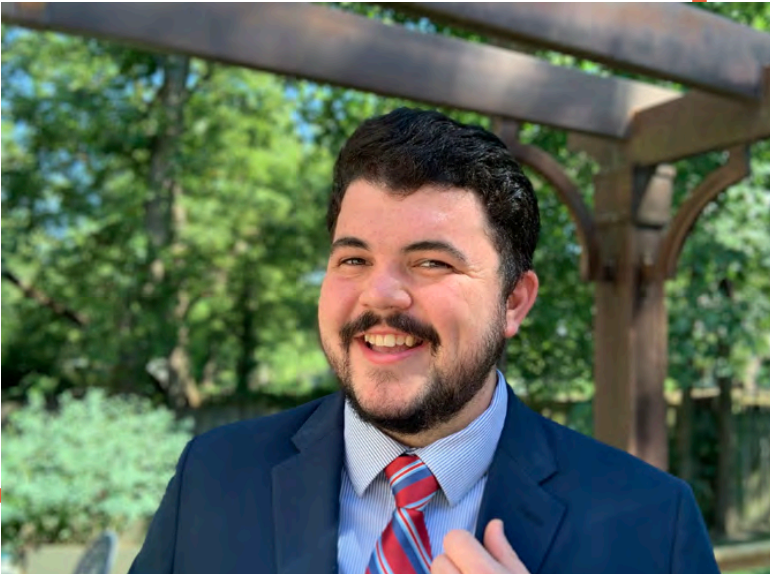Physics Teacher Joe Milliano
Joe Milliano
When he was in first grade, Joe Milliano took his first ever tap dancing class. This hobby would later lead to some of his first experiences with teaching.
“In the spring semester of my freshman year of college, I was teaching a high school level tap class. I was one year removed from the students that I was teaching,” he said. “I was bad at it. I didn’t know how to command a room and make sure that everyone was on task and learning and working together. The whole experience was a disaster.”
Instead of being discouraged, Milliano used this experience to motivate himself to improve his teaching. However, as a physics and math major, he still had a long way to go before discovering that teaching was what he really wanted to do.
“The reason teaching was even on my mind is because I would help out a lot of my friends who had to take a required physics class. They would be complaining about having to take the class while I’m sitting there like, ‘No, this stuff is so cool!’ And I loved helping them realize, ‘Oh wait, this is kinda cool,’” said Milliano.
After his junior year of college, Milliano did a summer internship with the Department of Energy.
“I was working with nuclear fusion in San Diego, and I absolutely loved the big picture of what the lab was doing and talking about the big projects that were there,” said Milliano. However, Milliano soon realized that working in the industry was not for him.
“[It] just drained me. I was sitting behind a computer, running code, analyzing data in this small windowless basement office. And there was very little interpersonal interaction,” said Milliano.
“That experience taught me that while I love what’s happening [in the industry], I don’t think the day-to-day work is for me. Ultimately while I love physics and math, I consider myself much more of a community builder than anything else. Teaching lies right at the intersection of those interests. .. Teaching is a communal experience between you and your students. You are asking them the questions. They are the ones doing the thinking, they’re communicating with each other to express their ideas,” said Milliano. “But in that, there’s a performance aspect to how you have the students think about things in a certain way. There’s some improvisation too, [like if] they shoot back an idea that’s different than what was expected, but still really good and worth exploring.”
For Milliano, one of the most gratifying parts of teaching is watching his students grow. “I had a student who I’ve taught for the past two years. When he joined my class, he was on a list from the teacher who taught the class before me, saying that I should tell him to drop AP Physics 1,” said Milliano. “I saw that list and said, ‘This is nonsense.’ If someone wants to sign up for a challenge, we should support them in that challenge. I don’t know enough about this kid to say one way or another about what their motivation is going to be, so I let him take the class … He was not paying a whole lot of attention in class and would sort of just get up and walk around sometimes. But I continued to develop a relationship with him, continued to help him stay focused on his studies and really understand the format of the course, where we learn through doing things together, and through community, and through discussion.”
That student’s growth resulted in him taking AP Physics 2.
“He did really well, in spite of the expectations that had been set up for him. To watch that growth in his learning and his confidence in his abilities over two years was one of my pride points in teaching, for sure,” said Milliano.
As a teacher, Milliano values allowing students to take control of their own learning. Instead of listening to lectures for hours on end, he encourages them to get out into the classroom and make their own meaning of the content.
“How would I define success in teaching? You would have to talk with the students that I’ve taught,” said Milliano. “If they have felt supported, if they have felt cared for, if they have felt academically challenged to the point where they are ready to take on future challenges and if they feel empowered to embrace whatever the future holds for them, that would be my measure of success.
